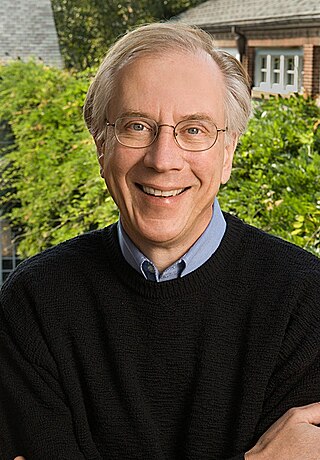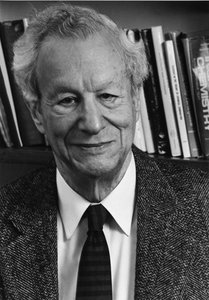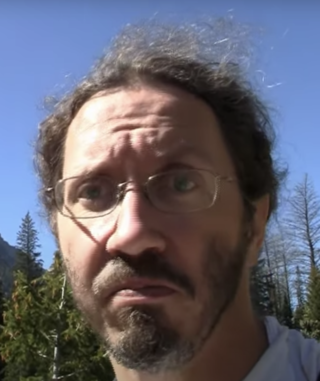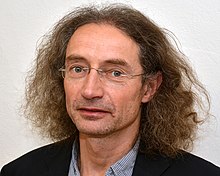
A chemist is a scientist trained in the study of chemistry. Chemists study the composition of matter and its properties. Chemists carefully describe the properties they study in terms of quantities, with detail on the level of molecules and their component atoms. Chemists carefully measure substance proportions, chemical reaction rates, and other chemical properties. In Commonwealth English, pharmacists are often called chemists.
The following outline is provided as an overview of and topical guide to chemistry:

Organic chemistry is a subdiscipline within chemistry involving the scientific study of the structure, properties, and reactions of organic compounds and organic materials, i.e., matter in its various forms that contain carbon atoms. Study of structure determines their structural formula. Study of properties includes physical and chemical properties, and evaluation of chemical reactivity to understand their behavior. The study of organic reactions includes the chemical synthesis of natural products, drugs, and polymers, and study of individual organic molecules in the laboratory and via theoretical study.

Thomas Robert Cech is an American chemist who shared the 1989 Nobel Prize in Chemistry with Sidney Altman, for their discovery of the catalytic properties of RNA. Cech discovered that RNA could itself cut strands of RNA, suggesting that life might have started as RNA. He also studied telomeres, and his lab discovered an enzyme, TERT, which is part of the process of restoring telomeres after they are shortened during cell division. As president of Howard Hughes Medical Institute, he promoted science education, and he teaches an undergraduate chemistry course at the University of Colorado.
Petr Čársky is a Slovakian quantum chemist.

Kendall Newcomb Houk is a Distinguished Research Professor in Organic Chemistry at the University of California, Los Angeles. His research group studies organic, organometallic, and biological reactions using the tools of computational chemistry. This work involves quantum mechanical calculations, often with density functional theory, and molecular dynamics, either quantum dynamics for small systems or force fields such as AMBER, for solution and protein simulations.

Frank Henry Westheimer NAS ForMemRS APS was an American chemist. He taught at the University of Chicago from 1936 to 1954, and at Harvard University from 1953 to 1983, becoming the Morris Loeb Professor of Chemistry in 1960, and Professor Emeritus in 1983. The Westheimer medal was established in his honor in 2002.
The National Academy of Sciences Award in Chemical Sciences is awarded for innovative research in the chemical sciences that in the broadest sense contributes to a better understanding of the natural sciences and to the benefit of humanity.
The Willard Gibbs Award, presented by the Chicago Section of the American Chemical Society, was established in 1910 by William A. Converse (1862–1940), a former Chairman and Secretary of the Chicago Section of the society and named for Professor Josiah Willard Gibbs (1839–1903) of Yale University. Gibbs, whose formulation of the Phase Rule founded a new science, is considered by many to be the only American-born scientist whose discoveries are as fundamental in nature as those of Newton and Galileo.
Robert George Bergman is an American chemist. He is Professor of the Graduate School and Gerald E. K. Branch Distinguished Professor Emeritus at the University of California, Berkeley.

Antonín Holý was a pioneering Czech scientist. He specialised in the field of chemistry and cooperated on the development of important antiretroviral drugs used in the treatment of HIV and hepatitis B. He was involved in the creation of the most effective drug in the treatment of AIDS. Antonín Holý is the author of more than 450 papers, 400 scientific discoveries and holds 60 patents. With more than 400 discoveries to his credit, his work has affected millions of people with viral diseases such as HIV/AIDS and hepatitis B and many other viral diseases. In 2008 he received an Honorary Professorship at the University of Manchester's School of Chemistry.

Institute of Chemical Process Fundamentals, Academy of Sciences of the Czech Republic, v.v.i. is one of the six institutes belonging to the CAS chemical sciences section and is a research centre in a variety of fields such as chemistry, biochemistry, catalysis and environment.
Frank Neese is a German theoretical chemist at the Max Planck Institute for Coal Research. He is the author of more than 440 scientific articles in journals of Chemistry, Biochemistry and Physics. His work focuses on the theory of magnetic spectroscopies and their experimental and theoretical application, local pair natural orbital correlation theories, spectroscopy oriented configuration interaction, electronic and geometric structure and reactivity of transition metal complexes and metalloenzymes. He is lead author of the ORCA quantum chemistry computer program. His methods have been applied to a range of problems in coordination chemistry, homogeneous catalysis, and bioinorganic chemistry.

Philip E. Mason is a British chemist and YouTuber with the online pseudonym Thunderf00t. He is best known for his critiques of religion, pseudoscience and creationism. He works at the Institute of Organic Chemistry and Biochemistry of the Czech Academy of Sciences.
Subramania Ranganathan (1934–2016), popularly known as Ranga, was an Indian bioorganic chemist and professor and head of the department of chemistry at the Indian Institute of Technology, Kanpur. He was known for his studies on synthetic and mechanistic organic chemistry and was an elected fellow Indian National Science Academy, National Academy of Sciences, India and the Indian Academy of Sciences The Council of Scientific and Industrial Research, the apex agency of the Government of India for scientific research, awarded him the Shanti Swarup Bhatnagar Prize for Science and Technology, one of the highest Indian science awards, in 1977, for his contributions to chemical sciences.

Alexander Butlerov Chemistry Institute — structural unit of Kazan Federal University, carries out research, development and academic activity in the area of basic and applied chemistry.

Michal Hocek is a Czech chemist. He is a group leader at the Institute of Organic Chemistry and Biochemistry of the Czech Academy of Sciences and a professor of organic chemistry at Charles University in Prague. He specializes in the chemistry and chemical biology of nucleosides, nucleotides, and nucleic acids.
Josef Michl is a Czechoslovak-American Chemist.
The Dream Chemistry Award is an international competition for young scientists organized by the Institute of Organic Chemistry and Biochemistry of the Czech Academy of Sciences and the Institute of Physical Chemistry of the Polish Academy of Sciences.

Institute of Organic Chemistry and Biochemistry of the Czech Academy of Sciences is a research institute under the Czech Academy of Sciences (CAS). The institute centers around research in the fields of organic chemistry, biochemistry and neighboring disciplines, mostly oriented at applications in medicine and environment. It is known for its contribution in the development of key drugs against HIV and HBV. The institute also takes part in university education, supervising master's and doctoral theses.











